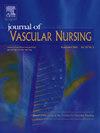心导管置入术后血管通路并发症的早期识别和频繁的心率和血压监测:范围综述。
IF 1.1
Q3 NURSING
引用次数: 0
摘要
背景:护士在心导管置入术(CC)后进行频繁的心率(HR)和血压(BP)监测,以确定成年患者股骨和桡动脉入路的血管通路部位并发症,这是一种广泛和长期的做法。目的:本综述的目的是回答两个问题:(1)现有证据如何支持成年患者经股骨和桡骨入路行CC后频繁监测心率和血压;(2)这种做法如何提示床边护士识别该手术的主要血管通路并发症,包括出血、血肿和假性动脉瘤?方法:采用范围综述的方法,由两位共同作者和医学图书管理员进行文献检索(PubMed, CINAHL,谷歌Scholar)。我们回顾、评估和分析了来自20篇文章的证据。结果:回顾了医学和护理文献,发现挑战目前的做法。在15项研究中,5项发现CC后频繁的HR和BP监测没有提供信息,而其余10项没有报告频繁的生命体征。两篇研究报道,CC后血管并发症是由RNs直接评估通路部位或患者自己发现的,与HR和BP无关。纳入5篇非研究文章,均建议频繁监测心率和血压。结论:尽管护理指南和专家意见文章一致建议在康复期间频繁进行HR和BP评估,但实证研究并不支持。目前的证据支持频繁的血管通路评估和患者教育。本文章由计算机程序翻译,如有差异,请以英文原文为准。
Early identification of vascular access site complications and frequent heart rate and blood pressure monitoring after cardiac catheterization: A scoping review
Background
Nurses perform frequent heart rate (HR) and blood pressure (BP) monitoring, a widespread and longstanding practice, after cardiac catheterization (CC) to identify vascular access site complications for femoral and radial arterial approach in adult patients.
Objective
The objective of this scoping review was to answer two questions: (1) how does the available evidence support frequent HR and BP monitoring after CC via femoral and radial approach in adult patients and (2) how does this practice prompt bedside nurses in identifying the procedure's major vascular access site complications, including bleeding, hematoma, and pseudoanurysm?
Method
Following the scoping review approach, literature search was conducted (PubMed, CINAHL, Google Scholar) by two co-authors and medical librarian. We reviewed, evaluated, and analyzed the evidence from twenty articles.
Results
The reviewed medical and nursing literature revealed findings challenging the present practice. Out of fifteen research studies, five found frequent HR and BP monitoring after CC to be uninformative while the remaining ten did not report frequent vital signs. Two research articles reported that vascular complications after CC were discovered by RNs directly assessing the access site or by the patients themselves, unrelated to HR and BP. Five non-research articles were included, which all recommended frequent HR and BP monitoring.
Conclusions
Frequent HR and BP assessment during the recovery period is not supported by empirical research despite being consistently recommended by nursing guidelines and expert opinion articles. Current evidence supports frequent vascular access site assessments and patient education.
求助全文
通过发布文献求助,成功后即可免费获取论文全文。
去求助
来源期刊

Journal of Vascular Nursing
NURSING-
CiteScore
1.40
自引率
0.00%
发文量
33
期刊介绍:
Journal of Vascular Nursing provides clinical information regarding aortic and peripheral aneurysms, upper and lower extremity arterial disease, acute and chronic venous disease, and more. Original, peer-reviewed articles present descriptions, etiologies, diagnostic procedures, medical and surgical treatment and nursing implications of vascular system disorders.
 求助内容:
求助内容: 应助结果提醒方式:
应助结果提醒方式:


